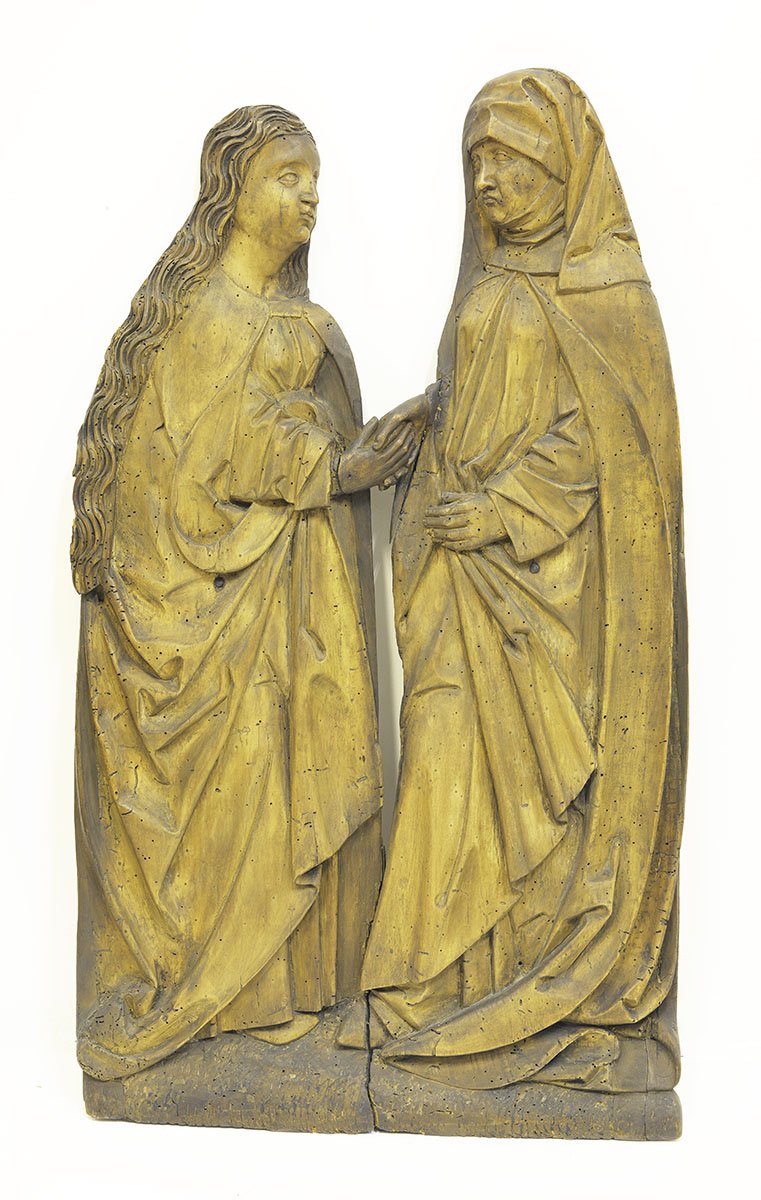
Visitation
Sculptures
| Artist | |
|---|---|
| Culture | Italian |
| Date | ca. 1505–1510 |
| Object type | sculpture |
| Medium, technique | bronze |
| Dimensions | 18 × 16.5 × 7.5 cm, 1.5 kg |
| Inventory number | 5363 |
| Collection | Sculptures |
| On view | Museum of Fine Arts, Second Floor, European Sculpture 1350-1800, Gallery 2 |
Zeus, the untiring seducer, took on the image of a tame bull in order to draw near to the Phoenician princess playing on the shore with her companions. After the bull, bedecked with flowers, had managed to trick the beautiful Europa onto his back, he swam across the sea to the island of Crete. In the oft-depicted Ovidian version of the story however there is no mention of the pugnacious resistance apparent in the Budapest small bronze. In Ovid’s Metamorphoses the princess was quite taken by the overtures made to her by Zeus turned bull. It is likely, then, that the author of the Budapest sculpture took inspiration not from this popular work, but from a less well known ode by Horace, in which the Roman poet writes of Europa’s desperate protestations.
This is the only cast known of this small bronze, and although the identity of its author remains doubtful, the unusual choice of source betrays he was familiar with Humanist works. The style of this outstanding piece is closest to the works of Andrea Briosco, given the sobriquet Riccio (curl) after his dense, curly hair. Riccio, known for his excellent bronzes, nursed close relations with the Humanist circles of the prestigious University of Padua, and influenced by this made a whole series of classically inspired small bronzes. Renaissance small bronzes are now considered sculptures, but at the time many were intended as functional objects. Such is the Europa, the interior of which is designed to hold incense.
Miriam Szőcs
Petrovics, Elek – Meller, Simon, Ferenczy István bronzgyűjteményének kiállítása, Országos Magyar Szépművészeti Múzeum, Budapest, 1917, p. 11.
Balogh, Jolán, Katalog der ausländischen Bildwerke des Museums der bildenden Künste in Budapest, IV – XVIII. Jahrhundert: 1. Textband Bd. 1, Akadémiai Kiadó, Budapest, 1975, p. 149-150., no. 190.
Szmodisné Eszláry, Éva, A Régi Szoborgyűjtemény kincsei, Szépművészeti Múzeum, Budapest, 1994, p. 9, 22-24, ill. 14.
Szmodisné Eszláry, Éva, The treasures of the Old Sculpture collection, Szépművészeti Múzeum, Budapest, 1994, p. 9, 22-24.
The Museum of Fine Arts Budapest: guide, Museum of Fine Arts, Budapest, 2006, p. 140-141, no. 185.
Szépművészeti Múzeum: Remekművek az ókortól napjainkig. 100 év, Szépművészeti Múzeum, Budapest, 2006, no. 45.
Museum of Fine Arts, Budapest: Masterpieces from the Collection, Museum of Fine Arts, Budapest, 2006, no. 45.
Szépművészeti Múzeum: Remekművek az ókortól a 18. század végéig, Szépművészeti Múzeum, Budapest, 2019, p. 150-151.
Museum of Fine Arts: Highlights from the Collection, Museum of Fine Arts, Budapest, 2019, p. 150-151.
Masterpieces: Museum of Fine Arts Budapest, Museum of Fine Arts, Budapest, 2019, p. 76.
Remekművek: Szépművészeti Múzeum, Szépművészeti Múzeum, Budapest, 2019, p. 76.
Museum of Fine Arts: highlights from the collection, Szépművészeti Múzeum, Budapest, 2019, p. 150-151.
Múzeumi kalauz: Vezető a Szépművészeti Múzeum régi gyűjteményeihez, Szépművészeti Múzeum, Budapest, 2021, p. 121.
Museum Guide: Old collections of the Museum of Fine Arts, Budapest, Museum of Fine Arts, Budapest, 2021, p. 121.
This record is subject to revision due to ongoing research.